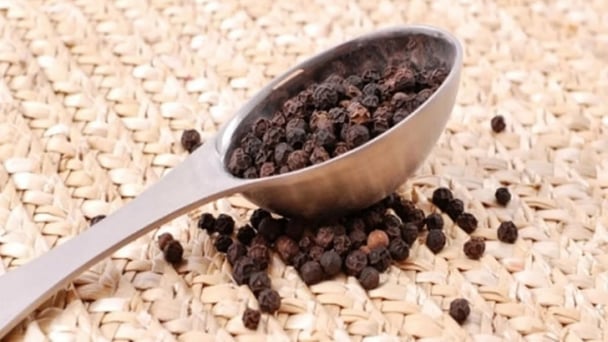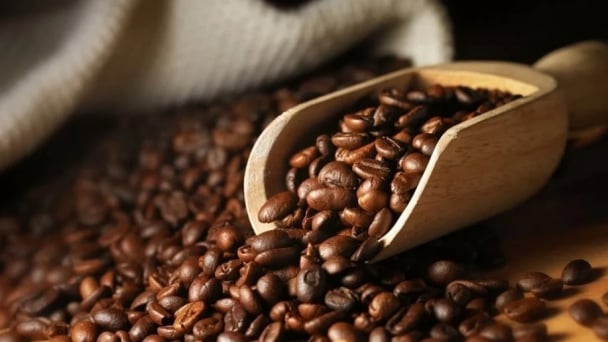April 16, 2025 | 05:26 GMT +7
April 16, 2025 | 05:26 GMT +7
Hotline: 0913.378.918
April 16, 2025 | 05:26 GMT +7
Hotline: 0913.378.918
https://nongnghiepmoitruong.vn/gia-thuc-an-chan-nuoi-chuan-bi-tang-lan-thu-7-d290889.html
According to Vice president of Dong Nai Animal Husbandry Association Nguyen Kim Doan, the price of pig and poultry feed has experienced six times of increase in every months since last November.
In the total six times of price increase, the animal feed cost from factories in Dong Nai jumped from VND 1.31 million to 1.99 million per kilogram and pig feed price alone was recorded to increase from VND 1.59 million to 1.99 million per kilogram.
Farmers concern about the seventh increase of animal feed price from VND 300,000 to 500,000 per kilogram this May.
While the cost of animal feed is increasing, that of pig is reducing. In Dong Nai, a live pig is purchased at VND 70,000 per kilogram.
With the current price of live pigs, many livestock farmers are facing the risk of loss, because the cost of raising pigs in recent years has surged. The price of breeding stock is high leading to the continuous increase of feed price and other spendings on biological safety to prevevnt African swine fever among others.
For households that are self-sufficient in breeding stock, the current price must also be at over VND 50,000 per kilogram. And for the households whose breeding stock are not available, they have to spend more money to acquire one. However, with the current feed price, the possibility of loss is worth a concern.
The price of animal feed in Vietnam escalated renlentlessly from the end of last year due to the impacts of the global supply of raw materials for animal feed production. The prices of world and Vietnam’s animal feed were affected by some main reasons including large export countries have undergone infavorable weather, the soaring of seaboat shipping fees due to container scarcity, China promoted grain purchase and import among others in the first months of this year.
As of today, the price of raw materials for animal feed production in the world remains high. On May 7, price of CBOT corn (Chicago Board) increased to US$ 7.24/bushel, marking the highest since March 2013.
The USDA projected U.S. 2021/22 corn ending stocks at 1.507 billion bushels, up from 1.257 billion bushels expected at the end of 2020/21, and above the average analyst estimate in a Reuters poll for 1.344 billion bushels.
According to some livestock farmers, the price of CBOT soybean on May 12 peaked to US$ 16.29 per bushel since September 2012 due to concerns over the tempered supply as the US’ soybean reserve is running low.
The USDA projected U.S. 2021/22 soybean ending stocks at 140 million bushels, roughly in line with trade expectations but up only slightly from the 120 million bushels expected at the end of 2020/21, a seven-year low. While the demand for importing new crop of U.S. soybean to China is expected to increase as Chinese pig is significantly recovered.
Production and transportation are at a disadvantage in some of the world's leading producers and exporters of corn, soybeans, etc., which are also having a significant impact on the prices of these agricultural products.
In Brazil, the ability to sow second-season corn in many of the main producing states is limited due to drought.
Globally, eyes remain on Brazil's 2020-21 corn production as USDA lowered Brazil's corn production to 102 million metric tons (mmt) (4.0 bb), down from 109 mmt (4.29 bb) last month.
China is continuing to buy grain globally in very large volumes. According to the forecast of some international agricultural market analysts, in the 2020/21 crop year, China's import demand for corn and soybeans will be at a record level. USDA predicts China will import about 24 million tons of corn in 2020/21, nearly three times the 7.9 million tons in 2019/20. China's soybean demand is expected to grow 13.4% year-on-year and surpass 100 million tonnes in 2020/21.
Chairman of the Vietnam Poultry Breeding Association Nguyen Thanh Son said that it is the roughest period for poultry industry in the last three year. While the price of live pigs has remained quite good, the price of poultry products has often been below the cost since 2019, causing breeders to sink deeply into losses.
While poultry prices are always at a low level, recently the price of animal feed has increased continuously, forcing many businesses, farms and breeding households to drastically reduce their flocks or hang up cages because they no longer have enough sources to feed their livestock.
According to the forecast of the Vietnam Poultry Breeding Association, with the current decline, it is likely that in the third quarter and the beginning of the fourth quarter of this year, there will be a shortage of domestic poultry meat and eggs supply, leading to the increase rate of imported chicken products that affects not only farmers but also food security.
Translated by Linh Linh

(VAN) Pepper prices on April 15, 2025: Global market sees mixed fluctuations, while domestic prices remain stable, trading around VND 154,000 - 157,000/kg.

(VAN) Coffee prices on April 15, 2025, have surged globally. Domestic coffee prices rose by VND 2,600, reaching the range of VND 126,300 - 127,200/kg.

(VAN) Pepper prices on April 14, 2025, remain unchanged both domestically and globally. Domestic pepper is still trading around VND 154,000 – 157,000/kg.

(VAN) Coffee prices on April 14, 2025, is flat both domestically and globally. Domestic coffee is being traded at a range of VND 123,700 to VND 125,000/kg.

(VAN) It’s eaten with almost every meal, used to make sushi, made into sweets, fermented into alcohol and offered to the spirits at religious ceremonies.

(VAN) Pepper prices on April 11, 2025, show a slight recovery from both domestic and global markets. Prices stay at VND 148,000 to VND 150,000/kg domestically.

(VAN) Coffee prices on April 11, 2025, increased slightly domestically, at VND 117,300 to VND 119,000/kg, up by VND 1,000 to VND 1,300/kg over yesterday.